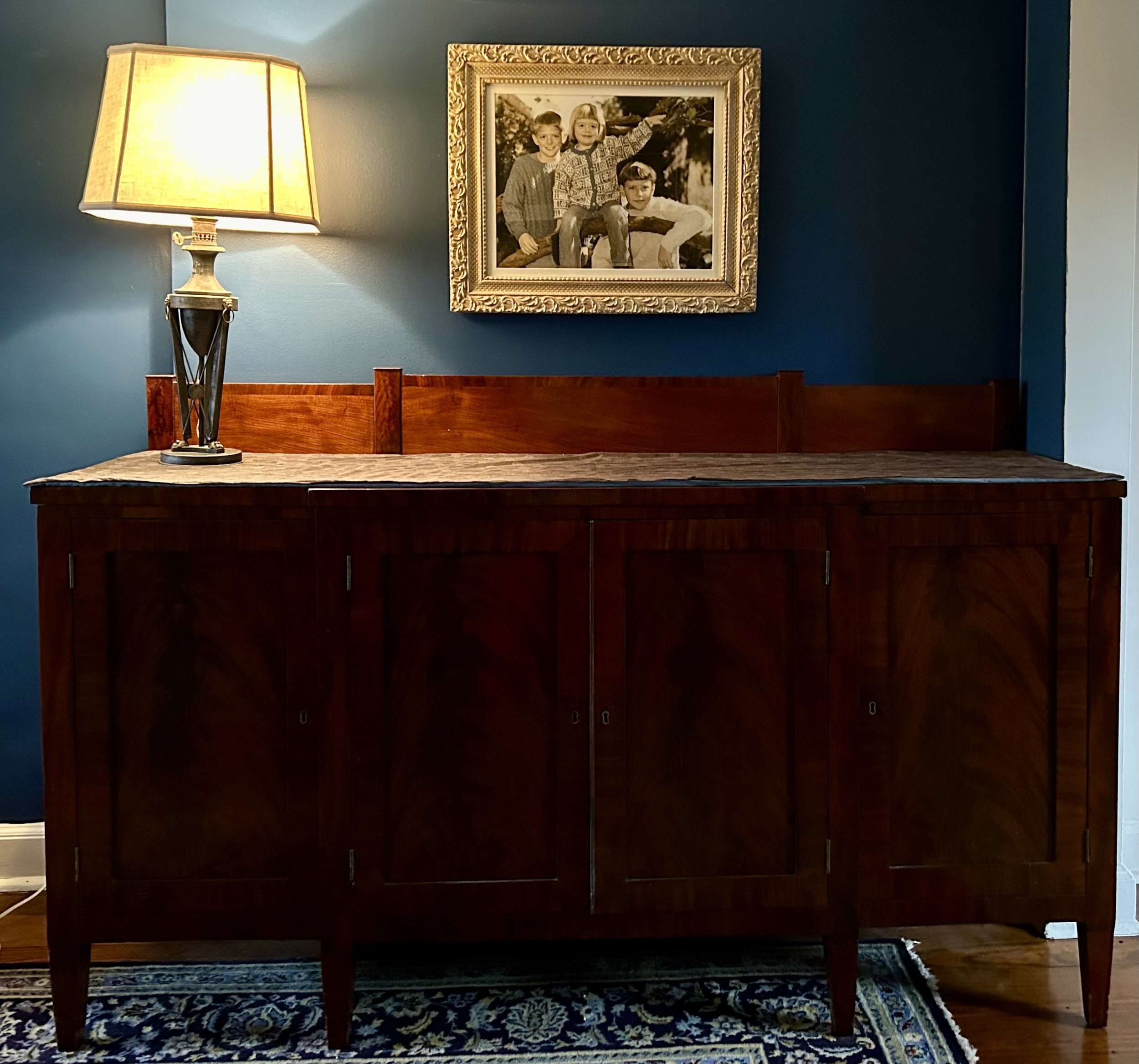To Renovate or Not To Renovate
A good question. There are any number of schools of thought regarding this when it comes to items that are considered “old” or “antique”. The prevailing one is that if you do anything to “renovate” a piece, be it furniture or quilts, the piece is no longer considered “antique”. I grant you there are likely some cases where a valuable piece of furniture has been painted or “modernized” to suit a new generation’s taste, thus destroying the intrinsic value of the antique. That said, is the piece meant to sit, unused and unappreciated? Or is it better to repair something so it can continue to be used and loved? I fall in the second category – mostly.
I bring this up because a friend recently asked if I could repair a quilt that was gifted to her for her wedding in 1993. The quilt was purchased from an unknown maker and was called an “Amish quilt” so most likely it was produced in Indiana by a woman from an Amish community there. This one is a lone star pattern with an appliqued “pillow top” section, and was hand quilted. While the fabric was a quality fabric, some of it did not age well. Typically, browns, burgundies and greens can age badly, especially when exposed to sunlight. They fade terribly, and can rot, leaving holes in the quilt top. The young couple used this quilt for years, but now are concerned it is too fragile to even display. This quilt is an heirloom for them, and as such, it is important to repair the quilt so it can continue to be cherished.
The trick for this quilt will be to incorporate the newer fabrics into the actual pieced parts of the quilt – the three long borders and a number of the diamond sections inside the Lonestar. While the process will not be complicated – I will applique the new fabric on top of the older worn one – the new pieces will also need to be hand quilted to mimic the original ones. Sigh.
So, is it still an “original” quilt of historic value? Likely not, but it was never a rare or collectible quilt. It was meant to offer love to a new couple starting their married life. It has done that for over 30 years, and as such is a treasure for the family.
I was thinking about this process when my friend brought this quilt over because I own an heirloom piece that I did have restored in 2012. The piece is a huge mahogany sideboard, and is known in my family as “The Princeton Sideboard”. It is a “Federal Style” piece, and was made likely around 1800. It came from my paternal grandmother, Katharine Strong Humphrey Osborne (1904-1987). The ancestry traces back to Benjamin Strong (1777-1831) who lived in Princeton, NJ. It passed from him to his son, Oliver Smith Strong (1806-1874), to his son Benjamin Strong (1834-1915), and to my great grandfather Ben Strong (1872-1928). It passed from the Strong family to the Humphrey family with my father (1927-2010), and now onto the Jarrett family.
Unfortunately, my grandmother had the piece “renovated” in the 1950s. This involved “fixing” some of the veneers, rebuilding some legs, and smearing a toxic shellac on the piece, which had darkened to very nasty streaks. The piece is also very heavy, and the “repaired” legs were unstable. I decided the time had come to honor my family and have the whole thing properly redone. This was not an inexpensive process, nor easy to locate an expert to do so correctly. After contacting some historic sites, I was referred to a team in Evanston, Illinois, who documented all the issues and repairs with numerous photos and write ups, which I bound into a book to keep with the sideboard for historic record.
What this leaves is a “renovated” antique which is basically not officially antique anymore. Given the piece’s deterioration, was it better to leave a dreadful 1950s era renovation in place, or fix it to make the piece last for another 100 years or so? I went with the latter option, obviously, and the sideboard sits in my dining room as it had in my parents’ dining room for most of my life. So now I need to stop writing and get to work on my friend’s quilt!


